
What is a Deadlift?
Which muscles are worked with a deadlift?
Primary muscles targeted.
Secondary muscles targeted.
The advantages of adding deadlifts to your routine
- The deadlift activates more muscles in one movement than any other resistance exercise making it great if you are restricted by time.
- The body is put under so much strain that it releases growth hormones promoting muscle growth in all parts of the body.
- The deadlift activates the knees, hips, and spine. Strengthening these joints is essential for injury prevention.
- Developing the posterior chain has a lot of overall health benefits and also promotes good posture.
- The deadlift is an ideal exercise to practice progressive overload on. Over time, increasing the weight on the bar will lead to increases in strength and size.
How to perform a deadlift
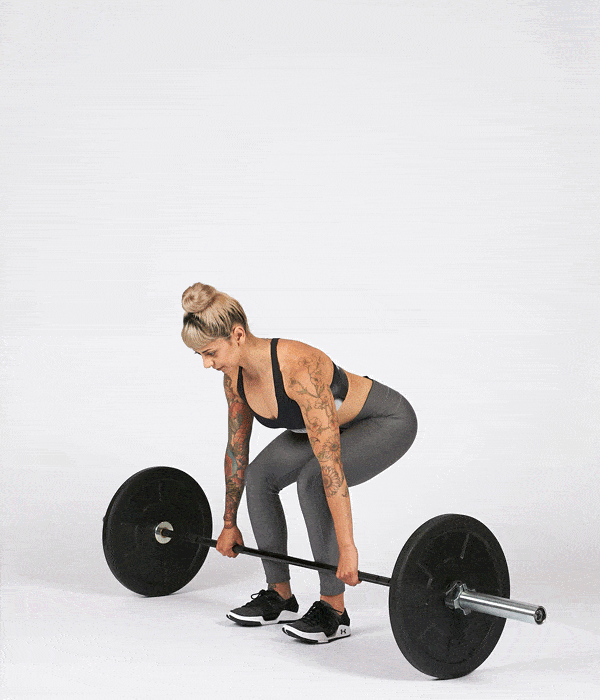
- Load up a barbell bar with your desired weight. Start light and pyramid up to your working sets.
- Stand with your feet under the bar at shoulder width so that your shins are just touching it.
- Hinge at the hips, push your butt backwards so that you are leaning over the bar and bend the legs.
- Grab the bar with an overhand grip just wider than shoulder-width.
- Take a deep breath. Upon exhaling, flatten your back and drive your heels into the floor as you straighten the legs and pull the bar into an upright position.
- Lower the bar in the same way as you breathe in.
Deadlift grips.

How to do Sumo deadlifts
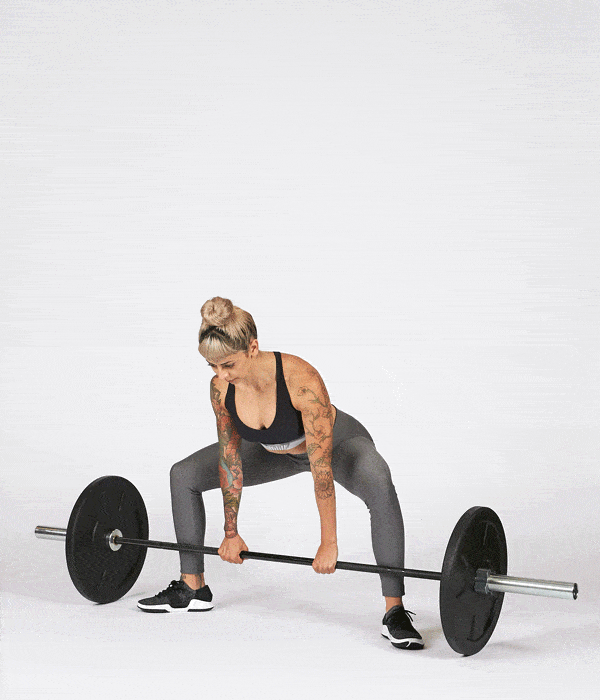
- Load up a barbell bar and stand with your shins touching it. The feet should be half a foot wider than shoulder-width with toes pointing outwards to around 45 degrees.
- Push the butt back, bend the legs, and grab the bar with a narrow, overhand grip.
- Straighten the back as you drive your heels into the ground and lift the bar until your back is in line with your legs.
- Hold this position for a second before lowering the weight.
- Breathe out as you pull the weight up and in as you lower it.
How to do a deficit deadlift
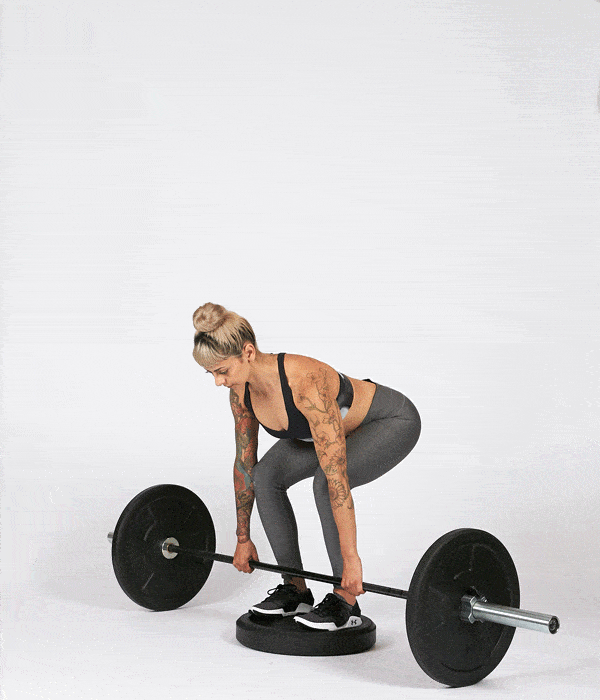
Rack pulls
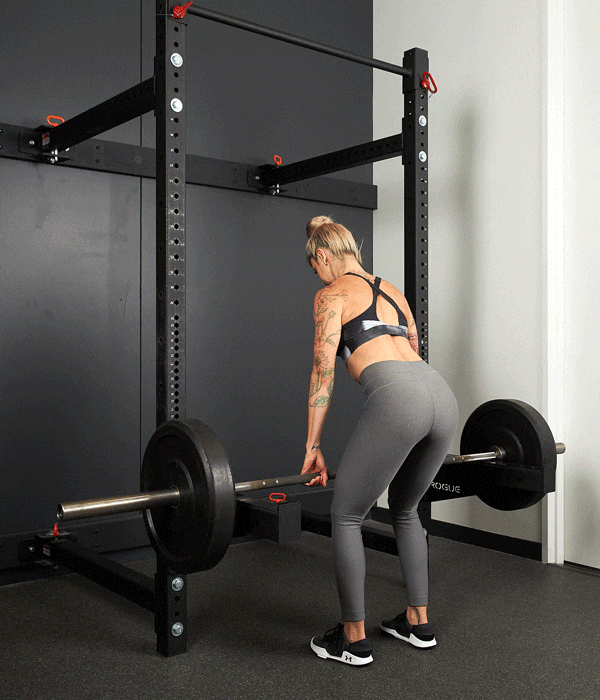
Kettlebell deadlift
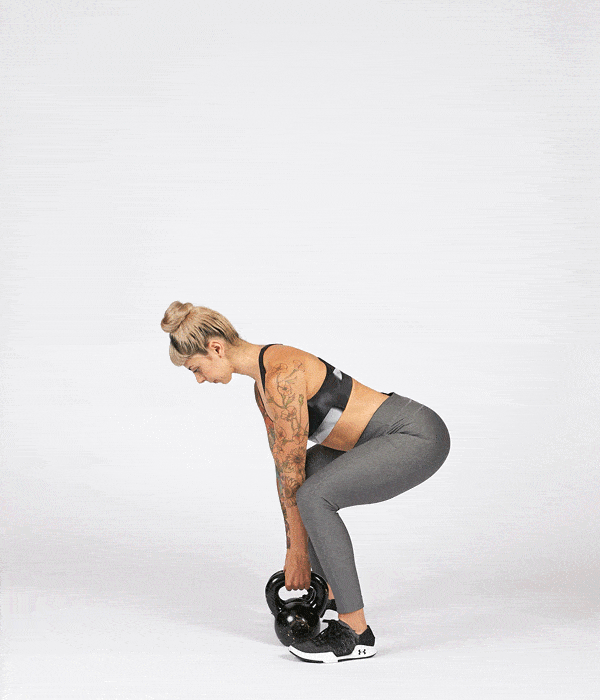
Alternatives to deadlifts
Stiff leg deadlift
Bulgarian split squat
Squat
Hyperextensions
Deadlift FAQs
Q: What is the deadlift?
A: The deadlift is a weightlifting exercise that works the muscles in your back, legs, and arms. You can either do it with a barbell or dumbbells. To do the exercise, you will need to stand with your feet shoulder-width apart and your knees slightly bent. Then, bend down and grasp the barbell/dumbbells with an overhand grip (palms facing down). From there, lift the weight off the ground by extending your hips and knees until you are standing upright. Finally, lower the weight back to the starting position.
Q: Why should I add deadlifts to my workout routine?
A: Deadlifts are a great exercise for building strength and muscle mass. They also help to improve your posture and can help prevent injuries in the lower back and legs.
Q: How often should I deadlift?
A: This depends on your goals and how much weight you are lifting. If you are just starting out, you may want todeadlift once or twice per week. However, if you are trying to build muscle or increase your strength, you may need to deadlift more frequently. Check with a certified personal trainer or coach to see what frequency is right for you.
Q: What type of equipment do I need for deadlifts?
A: All you need for this exercise is a barbell or dumbbells. If you are using a barbell, you will also need a weight plate. You may also want to use a weightlifting belt for extra support.
Q: How much weight should I lift?
A: Again, this depends on your goals and level of experience. If you are just starting out, it is best to start with lighter weights and gradually increase the amount of weight you lift over time. As you get stronger, you will be able to lifted heavier weights. However, if you are lifting too much weight and cannot maintain proper form, it is time to reduce the amount of weight you are lifting.
Q: What is the proper form for deadlifts?
A: Proper form is important for any exercise, but it is especially important for deadlifts. This is because the exercise puts a lot of stress on your lower back. To maintain proper form, start by standing with your feet shoulder-width apart and your knees slightly bent. Then, bend down and grasp the barbell/dumbbells with an overhand grip (palms facing down). From there, lift the weight off the ground by extending your hips and knees until you are standing upright. Finally, lower the weight back to the starting position. Remember to keep your back straight and avoid rounding your shoulders during the exercise.
Q: What is the heaviest deadlift on record?
A: The heaviest deadlift on record is 501 kg (1100 lb), which was done by Hafthor Bjornsson in 2020.
Q: What are some common mistakes people make when deadlifting?
A: Some common mistakes people make when deadlifting include rounding their shoulders, arching their back, and not keeping their feet planted firmly on the ground.
Q: How can I prevent injuries when deadlifting?
A: There are a few things you can do to prevent injuries when deadlifting. First, make sure you have proper form. Second, use a weightlifting belt for extra support. And finally, don't lift too much weight if you are just starting out. Gradually increase the amount of weight you lift over time as you get stronger.
Q: Do I need to warm up before deadlifting?
A: Yes, you should always warm up before any type of exercise. For deadlifts, you can do a few light sets of the exercise with no weight to get your muscles warmed up.

